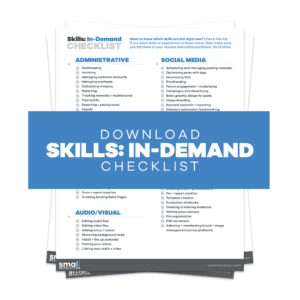You’re an excellent writer.
You’ve been writing for months or even years, and you’re confident in your abilities. Your friends and family have endlessly praised your writing skills. And your copywriter salary says it all.
So, this new client you’re looking to work with must know this, right? They must have heard that you’re a pro, and they’re lucky that you’re even considering working with them.
This will be easy. You’ll be hired in an instant, right?
Wrong!
Even though you’re a skilled professional writer, you still need to impress potential clients who aren’t familiar with who you are, your expertise, or your work ethic.
Always go with the ‘best foot forward’ mindset.
You need to treat every new encounter with a potential client like the headline to your copy. Grab their attention by showing them what they’re looking for!
Many freelance writers, however, forget about this important factor when trying to win over new clients or even retain current ones.
Whether they’re fresh in the industry or they’ve been around for a while, freelance writers still make these five common mistakes with prospective clients:
- Being ignorant of writing rules
- Overwhelming the client by overselling themselves
- Pointing out the client’s shortcomings in a derogatory manner (colloquially, throwing shade)
- Delivering their price tag before they’ve delivered their value
- Sending the client poor quality samples
In this article, we’ll be diving deeper into this list to understand it better.
Strap in.
1. Being Ignorant of Writing Rules
Rules are meant to be broken. There are some rules the world needs to do away with.
Case in point: Even though it’s against grammar rules, the above sentence just ended with a preposition. Did you notice it while reading? Probably not. That’s because it just flows better that way.
With which writing rules does the world need to do away?
Now, you definitely noticed the above sentence. And it’s because it is a bit off. It’s not the way the world talks.
Slow down. This demonstration does not give you carte blanche to wantonly go against every dictate of written English.
If you’re a copywriter, for example, you are likely writing web copy for marketing purposes. Your aim is to drive traffic to your site and build authority in your niche.
You also need to rank better in search engines so you make it easier for people to find you online. This traffic is what translates into sales and breathes life into your business.
Copy is one of the most critical pieces of your marketing puzzle. You cannot, therefore, afford to take a blasé approach with your writing.
For the sake of online survival, some rules can’t be broken. Here are some of them:
- Don’t bore your readers
- Don’t confuse your readers
- Don’t be filled with hot air
Let’s go over these three rules.
A. Don’t Bore Your Readers
While writing, it is easy to fall into the trap of going on and on about the problem you mean to solve with your copy. You start by mentioning it, then you start explaining what it means and what may have caused it, and you end up narrating an entire anecdote from your neighbor’s experience with the same problem.
Stop doing this.
The person searching for information on how to solve their problem already knows what it feels like to have this problem.
You won’t help your reader if your entire article merely reiterates their problem and the various ways it inconveniences them. Your article needs to help them overcome their issue. Be their guide.
If your prospect is searching for a solution to a problem they’re experiencing, there’s a good chance they already know how frustrating their situation is.
Don’t re-emphasize your reader’s problem.
As Peter Griffin would say, “That’s putting a hat on a hat.”
Here’s the formula for when your reader is experiencing a problem, and your goal is to sell them on a solution with your copy:
- Address the issue by briefly mentioning it to express that you understand it
- Salt the wound slightly to catalyze the process
- Present the reader with your solution
- Call the reader to take action (CTA)
Stick to this formula to avoid dwelling on a particular subject or going off-topic.
B. Don’t Confuse Your Readers
The best way you can counter this is to begin writing your copy with your client in mind.
Only talk about what the reader cares about. Address their search intent.
Make your writing clear and easy to understand. Most of your readers are most likely not industry experts, so using industry-specific jargon, for instance, will only serve to confuse them.
Be patient and compassionate with your readers, and assume they know very little about what you’re writing about. Take the time to educate them.
C. Don’t Be Filled With Hot Air
If you can’t prove it, you should cut it.
Do not write an unbelievable copy based on hype. Write about what you have tried and tested to be accurate or, at least, has been proven by other experts.
For example, if your headline is “3 Sure-Fire Ways to Get 3 Billion Leads to Your Site in 3 Days,” then you should have already tried these methods and proved they work.
Moving on to the second dangerous mistake.
2. Overwhelming the Client by Overselling Yourself
Imagine walking into a realtor’s office looking to buy your first house, and the realtor starts raving about the cutting-edge composite materials used in the house.
Then they proceed to talk about the angles of the sloping roof and how they affect the thermals of the interior. They also give you a full-length explanation of the orientation of the house with regard to the position of the sun throughout the year.
Would your next statement be:
A. Where do I sign?
or
B. Can I see the house?
Of course, you’d want to see the house first. As would your prospective client, who would ask for proof of your writing first!

Don’t spend time talking about yourself. Instead, show the client what you’re bringing to the table with samples of your work and the results it generated for other businesses.
3. Pointing Out Your Client’s Shortcomings in a Derogatory Manner
In his book, How to Win Friends and Influence People, Dale Carnegie wrote:
“Criticism is futile because it puts a person on the defensive and usually makes him strive to justify himself. Criticism is dangerous because it wounds a person’s precious pride, hurts his sense of importance, and arouses resentment. Any fool can criticize, condemn, and complain—and most fools do. But it takes character and self-control to be understanding and forgiving.”
Enough said.
4. Delivering Your Price Tag Before Your Value
“I can write copy for your website for $2000 a month.”
Assuming you’re a client on the hunt for a good copywriter, would you be convinced to hire a person whose sales pitch was the statement above?
No. You want to know what you’re investing in. You want to know how hiring a particular person will impact your business.
When approaching a potential client, ensure you deliver a detailed proposal listing your services and the corresponding fees.
Again, put yourself in your client’s shoes and do unto them what you’d like to be done unto you.
5. Sending Poor Quality Samples
Go through your samples before sending them for review because they are the best representation of your services.
Even if you only have one piece of content to show, make sure it is polished and in its best condition. Make sure it showcases everything you want it to in the best way possible.
Have someone else look at your samples so you can get a different perspective.
Once you’re comfortable with your samples, make sure you send them in the correct format. For an excellent writer like yourself, PDF is your best friend.
PDF will ensure that the client can read your work and that it will be structured properly on their devices.
If you’re required to send a resume, you need to learn how to construct one that is appropriate for the job you’re applying for.
Are you aware of the anatomy of a winning resume?
No? Well, you’re in luck because there’s an excellent online course that was designed for that very purpose.
Gain More Clients With a Stronger Skillset
If this article were to end in one sentence, it would be this:
Always put your best foot forward when approaching prospective clients.
These lessons are designed by online professionals for online professionals.
Successful Behaviours and Habits for online professionals is extremely pertinent to the context of this article.
Here’s to winning more clients!


